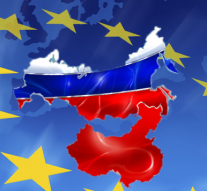
New economic tigers
Economy 6 May 2019Every era and period of time in the global history is marked by the overall economic and/or political dominance of one or more countries. This role was taken by Portugal, Spain, France, the UK, Germany, Russia, USA, and many others. Depending of the level of commitment to the global order, all the countries have faced with their rises and falls. The modern global relations are based on the economy boom. The countries measuring rise are targeted as the “economic tigers”. At the very beginning of the XXI Century, according to many academics, economics, and futurists, three countries will take the global dominance: China, Russia and the EU.
It passed 10 years as the global financial crisis continues in the industry that was at its epicenter: banking. There has been a truly dramatic retrenchment from foreign markets, making banking a rare case of an industry becoming less, rather than more, global. As of 2007, gross cross-border capital flows have fallen by 65%, and half of that is due to a sharp reduction in cross-border lending and other banking activities, a new McKinsey Global Institute report finds. Stung by a series of risky foreign adventures that came back to bite them, most large global banks in Europe and the United States have retreated from foreign operations. For instance, before the crisis, the three largest German banks had two-thirds of their total assets in foreign markets; today it is only one-third. According to Dealogic, banks have divested more than $2 trillion in assets since 2007.
Nowhere have horns been drawn in as dramatically as in the euro zone. The foreign claims of euro zone banks — including lending by their foreign subsidiaries around the world — have slumped by the equivalent of $7.2 trillion, or 45%. Much of that change comes from decreased lending to other countries within the euro zone. Before the crisis, the euro zone was on the way to becoming a single banking market. Now that market is fragmenting along national boundaries once again. The notion that, within the common currency area, lending was quasi-domestic and that country risk was a thing of the past proved to be a dangerous misconception. Of course, the retrenchment of global finance also reflects pressure on banks from regulators and shareholders to rebuild their capital and liquidity. But most banks simply found that margins and profits in foreign markets where they lacked scale or sufficient local knowledge were lower than returns on domestic business.
And so their focus returned to domestic business. In both France and Germany, banks have increased their domestic business substantially over the last decade, more than replacing the lost foreign business. Does that mean that banking is turning its back on globalization? For some banks, the answer is simply: Yes. However, others continue to expand abroad. Canadian and Japanese banks have doubled their foreign loans and other claims since 2007; indeed, Canada’s banks now have half their assets overseas. China’s four largest banks have quadrupled the share of foreign assets on their balance sheets since 2007 to $1 trillion—that make gives them larger foreign portfolios than German or Italian banks. Without doubt, there will be more to come from China’s big four commercial banks. Today, the assets they hold abroad are still only 9% of total assets; 20% is more typical of banks in advanced economies.
Since the European banks are slowing their capital down, China leads something of a changing of the guard in global finance, being not all alone in this process. While many large banks headquartered in advanced economies are firmly on the back foot, those of emerging economies are venturing further afield. Like China’s largest banks, some in Russia, Brazil, and India are also expanding beyond their national borders. The McKinsey Global Institute’s new Financial Connectedness Ranking finds that advanced economies still hold 85% of the global stock of foreign investments. But developing economies are rising up the rankings. Their share of total foreign investment assets has risen from 8% to 14% over the past ten years. China has risen from 16th place in 2005 to 8th in 2015. Brazil has moved up seven places since 2005. Indonesia and Thailand have risen seven and six places, respectively, during this period, while India has moved up three places.
It seems that on the contrary, instead of three big economic tigers, the global economy will face only one – PR China. Its economic dominance remains to be instable and unpredictable but what is sure, is that it will be guided by the heavy investments all across the world.



